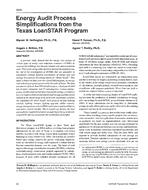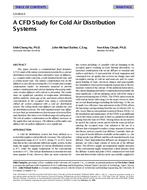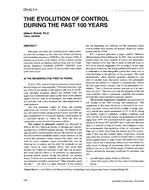In this study, heat transfer coefficients for radiant floorheating systems were investigated in a special test chamberthat is one of the very first implementations of ANSI/ASHRAEStandard 138 in the world. Radiant systems offer high energyandexergy-efficient sensible heating and cooling potential.These systems can be directly coupled with low enthalpy,renewable, or waste heat resources. Heat transfer coefficientsare important design parameters for radiant systems that effectthe heat transfer capacity of the heated/cooled surface to theindoors. In this study, radiant, convective, and total heat transfercoefficients for radiant floor heating were investigatedexperimentally. Experiments were conducted in a special testchamber that was established according to ANSI/ASHRAEStandard 138 with minor differences. The test chamber dimensionsare 2.74 × 2.25 × 2.45 m (8.99 × 7.38 × 8.04 ft) and thereare no floor coverings during the test. Coefficients were determinedthrough two difference methods. Heat fluxes from theheated floor that calculated via both methods and obtainedfrom the “Design Graph for Sensible Heating and Coolingwith Floor and Ceiling” in ASHRAE Handbook—HVACSystems and Equipment (ASHRAE 2008). According to theexperimental results, total heat transfer coefficients for theradiant heating system were obtained between 8.8 and 12.1 W/m²K (1.43 and 2.13 Btu/h·ft²·°F).
Citation: 2017 Winter Conference, Las Vegas, NV, Transactions, Vol 123, Pt 1
Product Details
- Published:
- 2017
- ANSI:
- ANSI Approved
- Number of Pages:
- 11
- Units of Measure:
- Dual
- File Size:
- 1 file , 4.5 MB
- Product Code(s):
- D-LV-17-007


